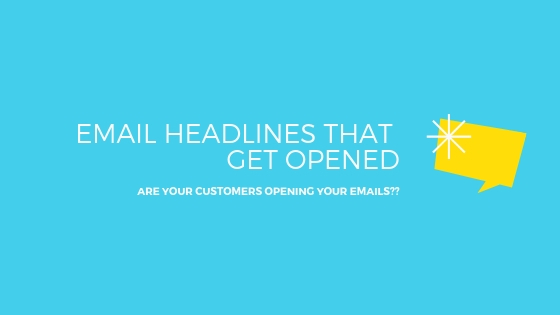Once you have decided to send emails out to your prospective buyers you need to look at what the headline should be. The main point of sending an email out is to get your offer at least looked and so the email needs to be opened. All your customers can see is the headline and who has sent it. Here some tips for excellent headlines that I have found on hubspot.com
Email Subject Line Best Practices
Regardless of your goals, these are the essential elements that your subject line should possess:
1. Urgency
There’s a phrase that, for many of us, is reminiscent of classic infomercials: “Act now!” And while we wouldn’t encourage using that exact language in your content, we do agree that communicating urgency and scarcity in an email subject line can help compel readers to click (or act) — when phrased creatively and strategically. But because you don’t want to be known as “the brand that cried wolf,” use these subject lines sparingly, and try to limit them to when the occasion genuinely calls for immediate action.
2. Curiosity
Sometimes, subject lines work because of their ability to send the message, “You will benefit from opening this email.” But other times, it’s good to maintain some sense of mystery — especially if it pique’s the recipient’s natural curiosity and interest. Because they require opening the email to get more information, they can result in, well, a higher open rate. But make sure the subject line, while enigmatic, still aligns with your brand. Too obscure, and it could end up being seen as spam.
3. Offers
Here’s where that benefit of opening a given email comes in. At the end of the day, people love new things and experiences — especially when they come free, or at least discounted. Open with that by including it in your subject line. Personally, I’m much more inclined to open my daily newsletters when there’s an offer of or allusion “free stuff” directly mentioned in my inbox.
4. Personalization
No two email subscribers are exactly the same — and, sometimes, that means the emails you send them shouldn’t be, either. At this point in time, marketers have never had more ways to learn about their subscribers’ preferences, jobs, or general (dis)likes. So when you send them content, on occasion, make it catered toward the individual.
5. Relevance and Timeliness
When we subscribe to an email list, much of the time, it’s because we want to be kept informed, or at least learn more about a given topic (more on that later). Similar to piquing your audience’s curiosity, crafting email subject lines that incorporate trending topics or timely headlines can help you establish your brand as an authority within your industry — and can compel people to click to read.
6. Name Recognition
Let’s face it: We all have famous people who, at some point, we presently or previously have admired. And when you understand your audience’s preferences and interests, you can pique their interest by including the names of this admired, recognizable individuals by including them in your content — and mentioning them in your email subject lines. But take heed: This tactic really only works when it aligns with your brand, product, or service, so keep it relevant, rather than just throwing out a recognizable name for the sake of recognition.
7. Cool Stories
At risk of sounding like a broken record, here’s another place where curiosity comes into play. By front-loading your email subject line with a compelling allusion to a story that the message tells — but can only be read if opened or clicked — your audience is like to become intrigued, and want to learn more. Again, make sure the story is relevant to your brand. Otherwise, it might just confuse your readers and prevent them from opening the email.
To read more of this excellent and very important post please visit Hubspot’s site.
Please leave a comment below on what you thought about this post and let me now if there is anything you would like me to research for you.
